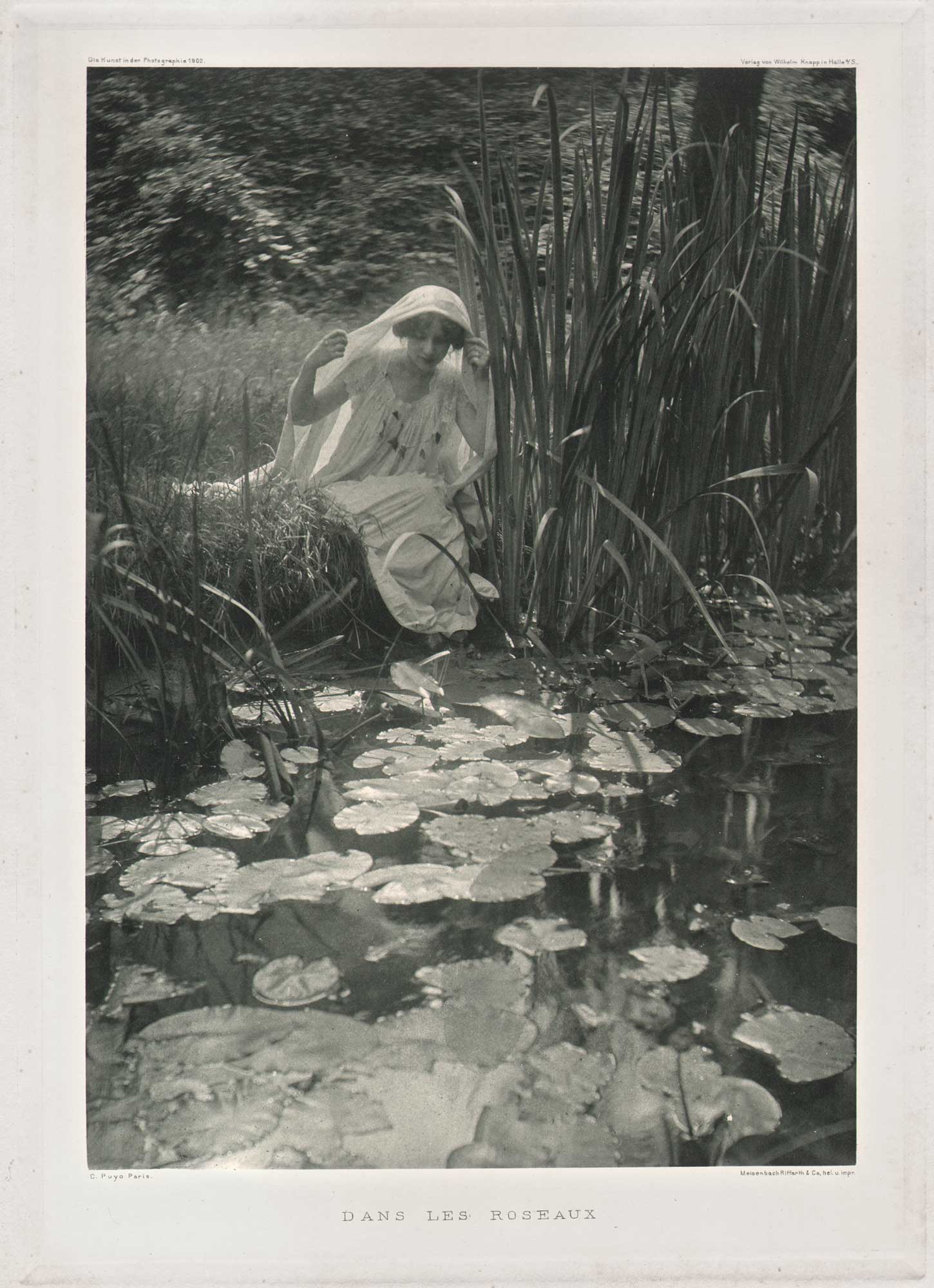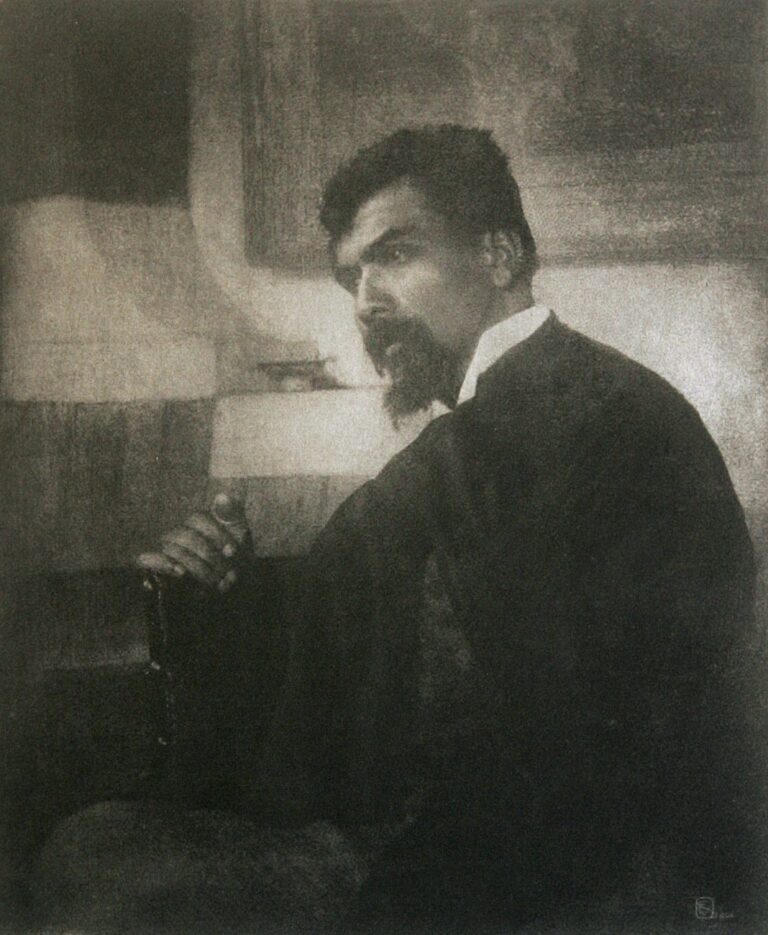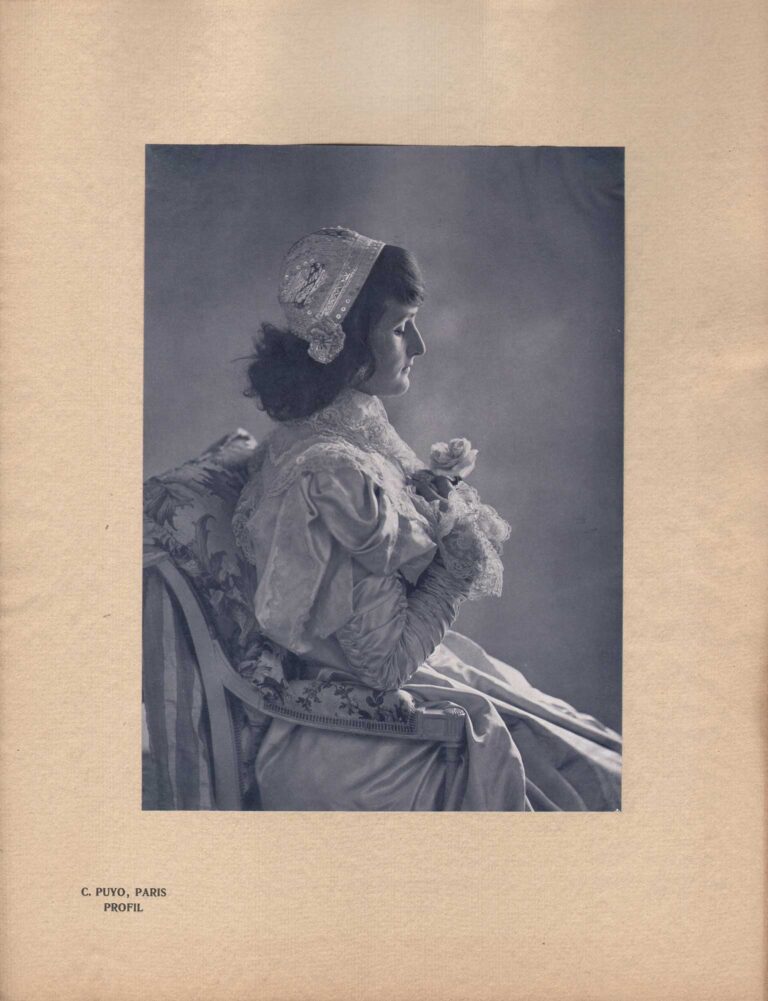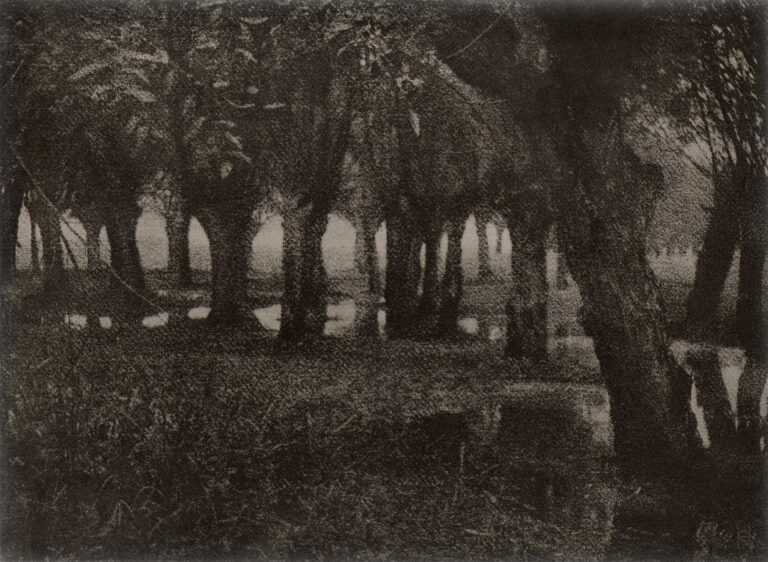
Dans les Roseaux | In the Reeds
A woman adjusts her veil while seated among reeds and lilly-pads at the edge of a pond.
Constant Puyo: 1857-1933
The following biography of Constant Puyo from the Metropolitan Museum of Art, New York:
A career officer in the French army, Commandant Puyo was, with Robert Demachy, a major figure of French Pictorialism. Together, they were among the founders, in 1894, of the Photo Club de Paris and the organizers of its first salon. A skilled technician, Puyo designed new soft-focus lenses for portraits and adjustable ones for landscapes; he perfected the gum bichromate and oil transfer printing processes, writing widely on the subject; and with Demachy, who had revived the gum bichromate print, he published a treatise on photographic printing.
Mostly decorative, with a nod to a modish symbolism, Puyo’s work is permeated with a Gallic joie de vivre and a fondness for beautiful women. Women appear in various guises: figure studies, nudes, portraits of professional models or elegant demimondaines; they are also seen simply, and more successfully, in pastoral landscapes as graceful silhouettes in vaporous, flowing dresses. Women gathering fruit or flowers was a favorite subject of the Pictorialists, who saw in the motif an agreeable enrichment of a feminine ideal. In a rare view of the photographer at work, this image of Puyo, Demachy, and their friend Paul de Singly reveals, not without irony, the photographers as hunters converging on their prey.
And the following Puyo biography from the Art Gallery of New South Wales Photography Collection Handbook, 2007:
Along with Robert Demachy, Charles Emile Joachim Constant Puyo is considered the chief protagonist of French pictorialism. After retiring from the artillery corps of the French army (he is at times referred to as Commandant Puyo) he devoted himself to photography from 1902. He was co-founder of the Photo-Club of Paris in 1894 of which he remained an active member. Puyo was also instrumental in organising the club’s salon and was on the editing board of its journal ‘Revue de photographie’. He was keenly interested in investigating photographic techniques for pictorial means, such as the gum bichromate process and the varied effects which lens aberrations would have on softening images. His 1896 publication ‘Notes sur la photographie artistique’ which describes such methods is referred to as the ‘bible’ of pictorial photography.



